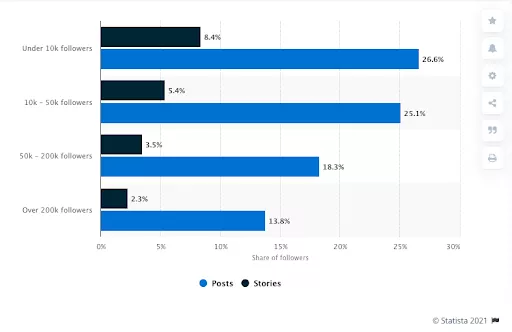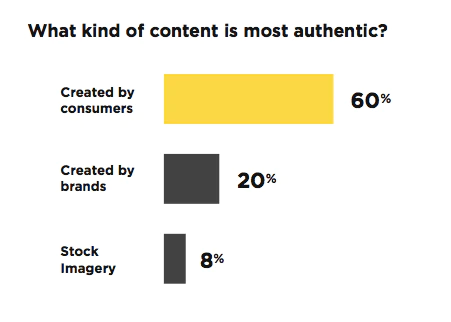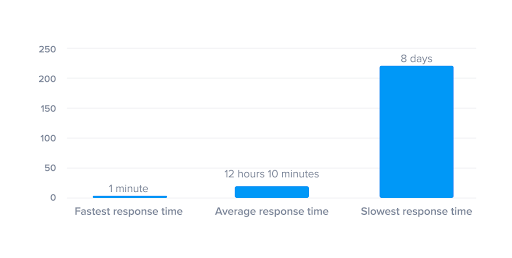15 Useful Instagram Marketing KPIs for Agencies To Track

Instagram has over 1 billion monthly active users worldwide, according to Statista.
And the majority of them are under the age of 45.
To boot, Meta for Business says that 200+ million Instagram users visit a business account every day.
So there’s a great opportunity to expose your client's brand to a large audience on the social media platform.
But how should your agency measure success?
The only right answer is with KPIs, short for key performance indicators.
With KPIs for Instagram marketing, you have a tangible goal with a number attached to it.
In this article, I’ll discuss:
- 15 KPIs your agency should be using for your Instagram marketing to gauge the success of your efforts.
- Why these KPIs are essential to your marketing goals.
- How using these KPIs helps you deliver more relevant content to your target audience—following the Law of Visibility.
(And there’s a lot of Instagram stats too!)
Let’s start off with the first KPI for Instagram marketing.
In a rush? Want to download this article as a PDF so you can easily take action on it later? Click here to download this article as a PDF guide.
#1 Useful KPI for Instagram Marketing: Reach
The first KPI for Instagram marketing is reach.
As a general definition, reach refers to how many unique views your Instagram post, story, or ad receives.
Before posting your content, you want to have a target number for reach, based on historical analysis.
In your Instagram Insights, you can check reach by day, week, and month as seen below.

For example, if you’re posting a photo of a customer using your product, what kind of reach did you accomplish with similar posts in the past?
And measuring reach provides insight into what resonates with your Instagram audience and what doesn’t.
So when reach is lower than your agency projected, you know that kind of content isn’t ideal for Instagram.
Or maybe you’re posting, running stories, and displaying ads at the wrong time of the day. Or even the wrong day entirely.
Conversely, when reach is high, it tells you to stick with that kind of content.
But remember, not everyone on your followers list will see your posts.
Because some are inactive on Instagram. And others may not see your posts if they don’t engage with your content often.
And in a study from Statista from 2019, it was found that the more Instagram followers you have, the less reach percentage you’ll have.
Accounts with over 200,000 followers have a measly 2.3% reach for stories.

You see, without reach, you also wouldn’t be able to put a lot of other KPIs into context.
#2 Useful KPI for Instagram Marketing: Impressions
The next KPI to track on Instagram is impressions.
Impressions are sometimes confused with reach.
But there’s a key difference: whereas reach measures the unique views for your content, impressions account for multiple views from the same user.
To illustrate, a user could scroll past your post twice, and it will count as two impressions.
Meanwhile, that would only count as one in the reach department.
Remember, impressions are always higher than reach.

So why should you add impressions to your list of Instagram KPIs?
Well, for a couple of reasons.
Maybe you’re trying to understand how well perceived your content is.
You see, if impressions are higher than usual, then that tells you users are making double or triple takes on your content. So, yea ... they like it.
Another thing to consider is the fact that consumers are more likely to warm up to a brand as they are exposed to it more frequently.
And that idea started with the 1968 study of the mere-exposure effect by Robert Zajonc.
So by monitoring the impressions KPI, you can gauge if people are seeing your content more than once.
How? Simple...just compare your impressions with your reach.
You see, the bigger the gap between impressions and reach, the more times your audience is being re-exposed to your content.
#3 Useful KPI for Instagram Marketing: Cost Per Click
Annual Instagram ad revenue increases with every passing year.
According to Statista, by 2023, ad revenue will reach $39.7 billion on the platform.
With those kinds of numbers, it’s likely that your business is using ads on Instagram too.
Or you’re at least planning to, right?
Well either way, you must keep track of cost per click (CPC) because it measures the performance of the ads you’re paying for on Instagram.
On average, CPC on Instagram ads is around $.70 - .$80, according to AdEspresso.
And according to HubSpot’s 2021 State of Marketing Report, 30% of marketers say that they see the most ROI on Instagram. That’s a close second, behind Facebook at 40%.

So there’s a lot of potential profit to be had with Instagram ads.
But you want to make sure you’re keeping your costs in check.
Monitoring CPC is an important KPI because it’s an insight into your overall marketing goals, such as:
- Trying to stay within a budget
- Understanding what type of content delivers the best results
- Determining return on investment
Various factors go into determining the overall cost of your Instagram CPC ads.
Some of those factors include:
- Max bid amount
- Ad quality and relevance
- Targeting options you choose
- Time of the year
You see, tracking the CPC metric permits you to gauge how effective your ad design and copy are at persuading consumers to take your ad’s call to action.
Now that you’ve seen the usefulness of CPC metrics, let’s move on to the next KPI for Instagram marketing.
#4 Useful KPI for Instagram Marketing: Cost Per a Thousand Impressions
Cost per a thousand impressions (CPM, cost per mille) has a similar use to cost per click in that it helps you manage your marketing budget.
But the difference lies in when to use each advertising model.
To clarify, if your goal is to drive conversions for your client, then CPC is the way to go because your goal is to get clicks to a call to action.
However, CPM should be used when your goal is to raise general awareness—and to expose your brand to as many Instagram users as possible.
According to Meta for Business, furniture design brand Made.com used CPM as a KPI in its 2018-2019 winter sale campaign.

And what they achieved was a 27% lower CPM than other placements they’ve tried.
Going forward, that tells the marketing team that the interactive videos they used in the campaign is what the target audience likes.
If you look at their Instagram nearly 3 years later, they’re still using interactives in posts.



If you’re wondering how much it will cost your client for every 1,000 impressions, I’ve got you covered.
On the report of software company Revealbot, the average Instagram CPM in 2021 is $10.08.

Let’s move on to the next Instagram KPI for your agency to track.
#5 Useful KPI for Instagram Marketing: Follower Growth Rate
Tracking follower growth rate KPI is useful when you want to monitor how effective your marketing efforts are in raising brand awareness.
At the end of each month, add up how many new followers you’ve gained. Then, divide that number by the number of total followers you had at the beginning of the month.
To illustrate, say that on June 1st, you had 2,100 followers.
Then, on June 30th, you have 2,400 followers.
From there, you’d calculate the follower growth rate with the following sequence:
300 new followers / 2,100 followers at the beginning of June = .14
So your follower growth rate for the month of June would be 14%, which is incredibly high.
As stated by Instagram hashtag manager, Flick, the average Instagram follower growth rate is 5.7% for every 3 months.

By monitoring follower growth rate, you can look back at successful months and see what kind of content and strategies resulted in the greatest increases in followers for your client.
And you can try to emulate those campaigns.
#6 Useful KPI for Instagram Marketing: Website Clicks
At the end of the day, you’re marketing on Instagram so you can sell your clients' products and services.
And unless you’re tracking website traffic, you’ll never know the best way to sell to the 54% of Instagram users that make purchases with the Instagram app.
So it’s imperative that you track how many of your client's website visitors come from an Instagram source.
In doing so, you can assess how adequate your agency's Instagram ads, posts, and stories are at generating curiosity for your brand.
Luckily, Instagram allows business accounts to check website clicks under the “Insights” tab.

But the thing is, Insights only tells you how many people clicked on your website URL from your profile.
In order to go more in-depth with how well specific posts and ads do, your agency needs to setup something called UTM parameters, which are basically short pieces of code added to your URL so that Google Analytics can see how much traffic comes from a very specific source.
#7 Useful KPI for Instagram Marketing: Engagement Rate per Follower
Engagement rate per follower is calculated by dividing the total number of interactions on one of your posts by the number of followers your account has.
With this metric, you get a better understanding for how appealing your content is compared to simply measuring total likes. Or total shares.
Because accounts with millions of followers are expected to have thousands of interactions while most business accounts simply won’t.
So an engagement rate evens the playing field.


According to Rival IQ, the average engagement rate on Instagram across all industries is 1.22%,.
And that number dwarfs the measly .09% engagement rate on Facebook.
By tracking engagement with your posts, you know what content to focus on and what kind of content can be worked on or trashed entirely.
#8 Useful KPI for Instagram Marketing: Most-Engaged Hashtags
Hashtags have the potential to expose your Instagram content to a lot more users.
As found by the audience insight platform, Mention, Instagram posts with no hashtags have an engagement rate that’s about ⅓ the rate of posts with 1 hashtag.
But using more than 1 hashtag seems to have a performance drop-off. This indicates that Instagram users are becoming more wary of spammy accounts.

And you have the chance to stand out when you create your own unique hashtags.
That’s because so many people are using the same hashtags all day long. For example, #love accounts for 3.8% of all posts.
Now, using most-engaged hashtags as a KPI for your agency's Instagram marketing isn’t a very difficult thing to do.
Simply click on Insights to reveal how users discovered your top-performing posts. One of the options includes “From Hashtags.”
And re-use those hashtags in future posts.
If future posts don’t meet your KPI target, then it’s time to back off on the hashtag and try something new.
#9 Useful KPI for Instagram Marketing: Mentions
Mentions aren’t always...mentioned when it comes to KPIs for Instagram marketing.
But it’s actually an incredibly underrated metric for agencies.
People are always complaining nowadays, and they’ll mention the brands they're unhappy with when they do it. And if you don’t get out ahead of an angry customer rampage, your client might end up with a PR blunder on their hands.
Not only that, a Sprout Social report stated that 79% of customers expect a response to their social media inquiries within 24 hours.
By tracking mentions, you’ll be in a position to appease upset customers. Thereby, you’ll prevent angry customers from spreading like a wildfire.
On the flip side, tracking mentions also opens up the possibility to find brand advocates for user-generated content (UGC).
According to the UGC platform, Taggbox, 60% of consumers think UGC is the most authentic kind of content.

With that, you have yet another KPI that informs you on the performance of your agency's Instagram marketing efforts.
Ok, now let’s dive into the next KPI for Instagram marketing.
#10 Useful KPI for Instagram Marketing: Comments
Tracking comments is incredibly insightful for your Instagram marketing campaigns.
Because it tells you if users resonated with your post enough to leave a comment.
And the more comments, the more people that have an emotional connection to your brand.

By determining a number of comments you desire for a post or a series of posts, it’s easier for you to evaluate performance.
Of course, your target number of comments should be based on past campaigns. Or, at the very least, based on the performance of your competitors.
Otherwise, you might be disappointed with the results.
#11 Useful KPI for Instagram Marketing: Navigation Metrics
For Instagram business accounts, you can track your Stories analytics and “Navigation” metrics.
Now, this is a powerful tool to have, as 58% of Instagram users say that they’ve become more interested in a brand or product upon seeing it in stories. That’s according to Instagram Business.

To summarize briefly: tap forwards, next story, and exit taps are a sign of low engagement while tap back is a good sign.
When more people are moving on to the next story in their queue, that’s a good indicator that your content isn’t engaging them.
For the next KPI for Instagram marketing, we’ll look at something useful for businesses with physical stores.
#12 Useful KPI for Instagram Marketing: “Get Directions” Rate
Now consider this: the SEO provider, Backlinko, says that 78% of social media users access the websites and apps exclusively with mobile devices.
And as claimed by WebFX, 76% of people who search with a smartphone visit a business within a day.
If you’re not providing a “Get Directions” option on your Instagram business profile, then you’re doing it wrong.

Setting a KPI target for “Get Directions” clicks helps you monitor the performance of your Instagram efforts in attracting in-store traffic.
Get Directions Rate= Total “Get Directions” clicks/ Total Profile Views

#13 Useful KPI for Instagram Marketing: Audience Demographics
If you’re selling something like tax services in the U.S., then it’s not great if most of your client's target audience consists of 12-15 year olds living in Zimbabwe.
You see, you must think about who you’re targeting—that’s where tracking demographics KPIs come in handy.
For example, maybe your goal is to increase Instagram followers by 100 by the end of the month.
But you also want to set up a KPI that accounts for how many of those new followers match your target persona’s demographics.
By setting demographic KPIs, you are in a position to gauge how effective you are at attracting the right consumers on Instagram.

#14 Useful KPI for Instagram Marketing: Discovery Sources
Understanding how users come across your content will add great value to your marketing for Instagram.
Under “Insights,” you can see “Discovery.”
These are the sources from which people discovered your content.

One thing missing from the above image is “From Explore”. Explore is where Instagram recommends content to users based on its algorithm.
According to Instagram, 50% of users use Explore every month.

What’s unique about discovery sources is that it allows you to see what sources are generating the most exposure for your content.
As for selecting a KPI target for discovery sources, that’s dependent on what your goals are for each post. And it’s also reliant on past data.
#15 Useful KPI for Instagram Marketing: Email Clicks
As reported by the email tracking provider, Litmus, 4 out of 5 marketers say that they’d rather give up social media than email marketing.
And according to the online marketing company, dotdigital, the average ROI for email marketing is $42 for every $1 spent.

With those stats, it’s obvious that email is the real star for digital marketing agencies these days.
So you’d want to promote your client's newsletter whenever you can.
And just like website clicks, email clicks can also be tracked under Instagram Insights.
When you go into the “Interactions” tab, you’ll see some familiar metrics like profile visits and website clicks.
This tracks how many times users click on your email so that they can contact you.
When consumers reach out to you on email, who needs a newsletter sign-up when your Instagram users are creating one for you?
Moreover, 63% of global consumers use email as a customer service channel, per Microsoft’s 2017 State of Global Customer Service Report.

The more email clicks you start seeing, the more attention your brand is garnering.
Conclusion
Download the "15 Useful Instagram Marketing KPIs for Agencies To Track " so you won’t forget to take action on it later. Click here to download it now.
There you have it.
Those are 15 KPIs for Instagram marketing that your agencycan use.
And with these KPIs, your campaigns will have SMART goals that are: specific, measurable, achievable, realistic, and set within a time frame.
As we all know, without SMART goals, you’ll lose focus on what your mission is.
And you won’t have any clear understanding of how effective your Instagram marketing is. Not to mention the fact that you’ll miss out on detecting the strengths and weaknesses of your strategies.
Now, if your agency is facing some time constraints and can’t focus on marketing to the 1 billion people on Instagram, then consider having Growbo take care of it for you.
We will thoroughly examine your unique needs and deliver social media content that will attract and delight your target audience.
Alternatively, at least take a look at some of our proven-to-convert sales funnels that will optimize your digital marketing strategy.
As always, let me know what you think in the comments below.
What’s the most interesting KPI on this list?
Keep Growin’, stay focused.
Mark

 Source
Source











